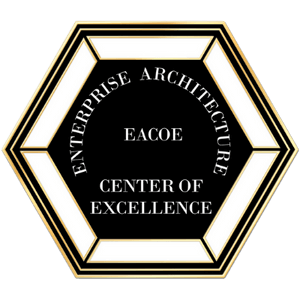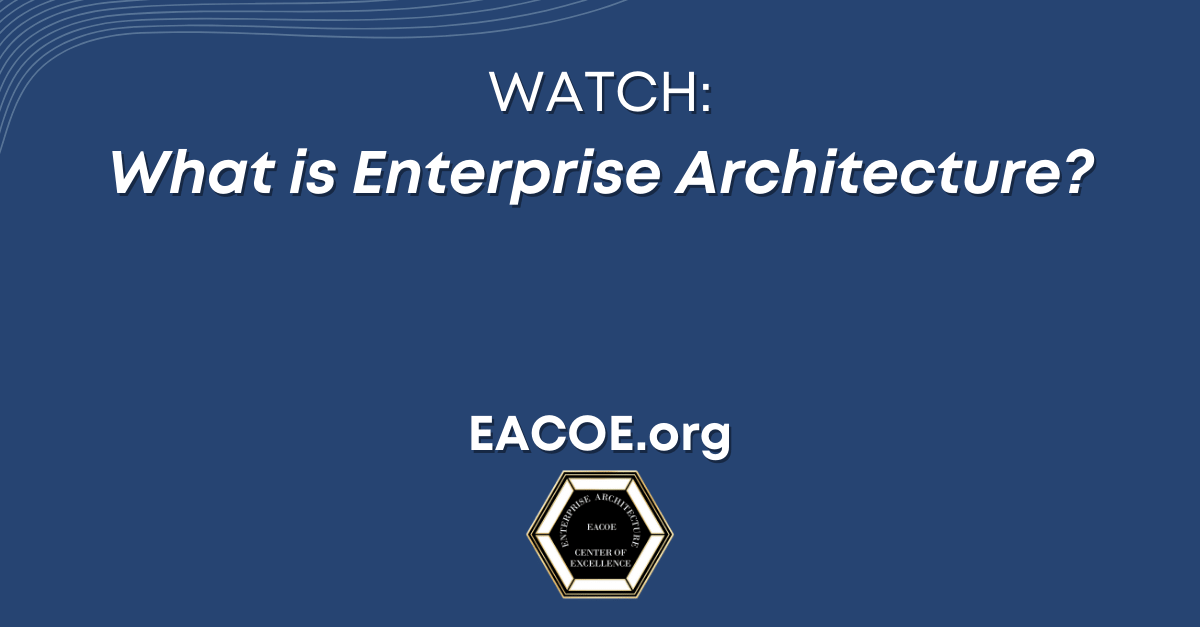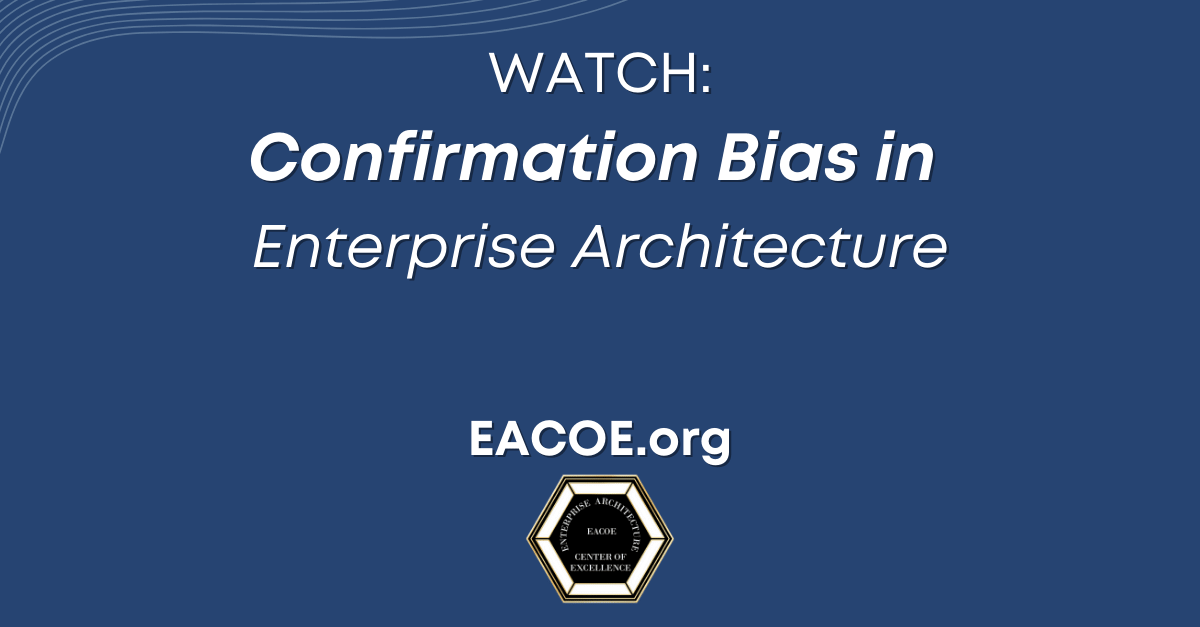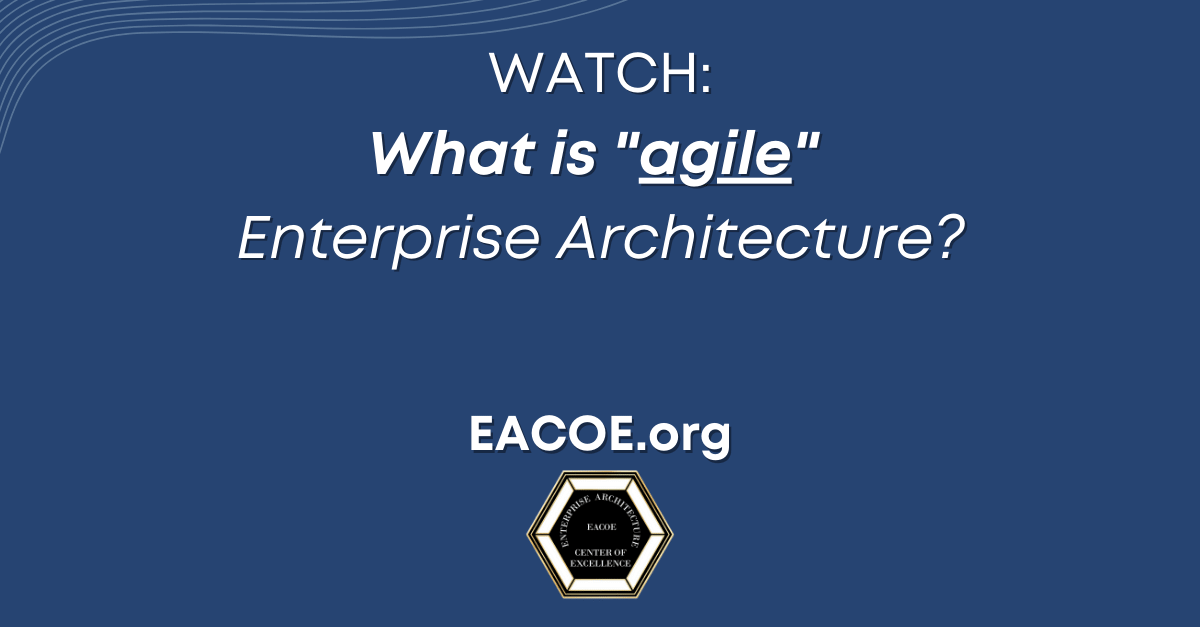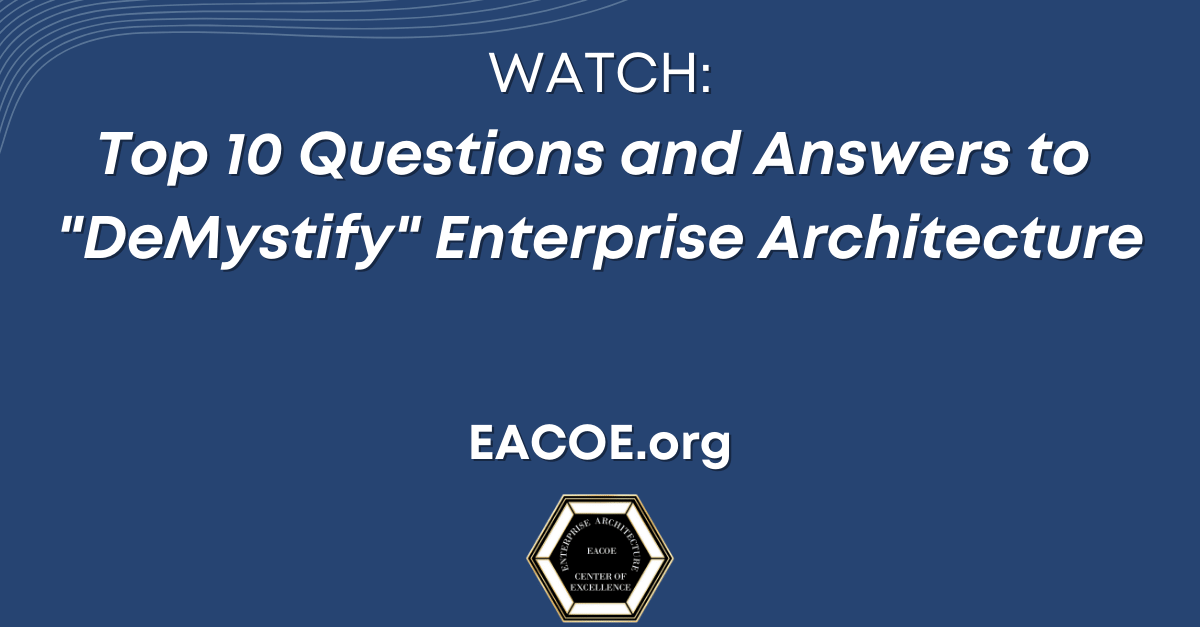What is Enterprise Architecture?
People who want to practice Enterprise Architecture (EA) or learn about it are in a difficult spot; it has become more difficult than ever to separate Enterprise Architecture facts from beliefs, experiences from opinions, and sound practices from declarations.
The field appears so irregular because academia, publications, consultants, and the Internet, present Enterprise Architecture in disparate voices advancing a multitude of approaches, meanings, and sets of expectations—some based on internet writings, some based on conjecture, and some based on opinion, and yes, some based on sound Enterprise Architecture practice.
How do you sort things out with blogs, forums, dozens of Enterprise Architecture organizations of various types, and the Internet itself?
The essential first question is, "Does what I am hearing or seeing make sense?"
We try to relate physical analogies to what we hear about Enterprise Architecture to provide a frame of reference.
We suggest if something does not make sense in the physical world, it probably is not valid in the Enterprise or Enterprise Architecture world.
We suggest that you favor logic over what you may hear or want to believe – sometimes due to "confirmation bias."
2. Another good question is, "Is this statement I have just read just a bunch of words?"
Nothing is true just because it is stated frequently.
3. The third question is, "Who is saying this, and what is his or her background?"
Has someone who says something about Enterprise Architecture (whatever the definition) verifiably ever done Enterprise Architecture?
Below are fact-based descriptions regarding Enterprise Architecture that are grounded in logic, sound practices, and principles based on decades of field engagements and experience.
Enterprise Architecture Defined From a Business Perspective.
Enterprise Architecture illuminates how an organization and all of its members can achieve its objectives by creating a series of engineered models and project initiatives that can be easily understood by all of the people associated with the organization.
Enterprise Architecture Defined From an Information and Technology Perspective.
Enterprise Architecture is explicitly describing an organization through a set of independent, non-redundant artifacts, defining how these artifacts interrelate with each other, and developing a set of prioritized, aligned initiatives and road maps to understand the organization, communicate this understanding to stakeholders, and move the organization forward to its desired state.
The primary objective of Enterprise Architecture is to clearly lay out the goals of the enterprise, its critical components, and to define them in their relationship with other components.
Enterprise Architecture helps in laying out a clear framework of a company’s structure, personnel, technology, and business. Enterprise Architecture defined thus provides graphic detail of an organization’s working and helps in planning and improving for optimizing business. It provides a comprehensive view of an enterprise's policies, principles, services and solutions, standards, and guidelines. It promotes and aligns IT initiatives throughout the enterprise.
Definition of Enterprise Architecture
“Enterprise” defined.
A definition of Enterprise in this context is any collection of organizations/ people and related things that have a standard set of goals/principles and/or a single bottom line.
Accordingly, an Enterprise can be a whole corporation, a division of a corporation, a government organization, a single department, a project, a team, or a network of geographically distant organizations linked together by common objectives.
The broader the definition of “Enterprise,” the more opportunity there is for integration. A narrow definition of Enterprise leads to more interfacing.
“Architecture” defined.
Architecture is the art and science of representing building (construction) and how components and artifacts are organized, related, and integrated.
Enterprise Architecture keeps businesses agile and flexible. Enterprise Architecture thus promotes business optimization by addressing business and information technology architecture, performance management, organizational structure, and processes.
It employs the framework to describe an organization’s present and future structure and behavior so that they are consistent with its strategic direction.
Enterprises are like physical Objects.
They need the level of specificity of buildings, airplanes, or ocean liners.
We believe that enterprises are much more complex than any of these physical items. For example, if you are building a rowboat, you probably do not need much architecture. However, if you are constructing an ocean liner, you need extensive architecture and at great detail.
If you are building a model airplane, you probably do not need much architecture. However, you need extensive architecture if you are building a Boeing 747 that flies over water at night (with us in it!).
Compare, too, a log cabin to a one-hundred-story building. Ask the people who completed a one-hundred-story building how much time they spent on architecture and how much they spent on Implementation. You might be surprised. But we don't think you will be surprised at the level of detail in the buildings' architecture.
If you are building an international organization with;
thousands of employees,
numerous products,
numerous customers and are undergoing constant change to keep up or move ahead of the competition, you need extensive architecture.
Architecture is the baseline for managing complexity and change. Without it, what will you use to address complexity and change, and what will you do to avoid unintended consequences (that is, you had no details in your architecture)? Architecture is about planning, analyzing, designing, and assembling solutions.
We hope organizations would stop using the prevalent life cycle of "construct, maintain, maintain, maintain," which sometimes masquerades as version 1.1, 1.1.1, 1.1.1.1, etc.!
What is your approach to managing complexity and change if it isn't EACOE Enterprise Architecture? We aren't saying that you have to do everything at once. Instead, Enterprise Architecture is a continuous process with greater granularity of its artifacts over time as the organization changes and as more of the enterprise is mechanized or automated.
Architecture occurs prior to making a change. Documentation occurs after the change is made. This is the only logical, practical, and cost-effective way to proceed. One crucial objective is to continually reduce the risk of unintended consequences and inappropriate changes.
What enterprise architecture is NOT
A great thing about the internet is anyone can write anything about anything. One of the problems with the internet IS, that anyone can write anything about anything! For Enterprise Architecture (EA), the Google popularity ranking tool, also thought of by some as a “search engine”, shows 811,000,000 search entries for EA. Not very useful.
Enterprise Architecture is often misused and misrepresented because of confirmation bias;
the tendency of human beings to actively search for, interpret, and retain information that matches their preconceived notions and beliefs.
The video below provides an understanding of “Confirmation Bias” in Enterprise Architecture.
Role descriptions and title changes for “Enterprise Architects” do not widely express the knowledge, skills, expertise, and experience required to architect an enterprise.
The discipline of enterprise architects is not yet near the maturity of professional fields like surgeons, engineers, pilots/aviation, architects for physical structures, and general contractors for physical structures. Yes, there is a positive movement to a profession.
Is Enterprise Architecture about information technology (IT), or is it about the entire enterprise?
It is not a question of mutual exclusivity (one or the other). Enterprise Architecture is about both the enterprise (business understanding) and the technology enablement (IT) of the enterprise. The definition of Enterprise Architecture above shows this. By the way, “technology” can mean something as simple as pencil and paper. Data is a component of Information and when coupled with “process” becomes Information – processed data.
We observe that a significant number of people that think about or are titled “Enterprise Architects” are actually doing Enterprise information technology architecture (EITA), application architecture, and so on.
This is part of the “maturing process” of the profession and why we defined The Enterprise Framework ™ that encompasses these and other architecture roles. If what someone is doing is the current layout and inventory of technology assets, then it should be called technology assets and logistics layout. It is not right or wrong, just an accurate description. If it means the connectivity of various technology assets, it can be called the technology blueprint.
Architecture and implementation are different. You may be able to “document the current assets (implementation) of information technology, but without the Enterprise Architecture desired state, architecting the desired-state technology architecture has little value (we did not say it has no value!).
You need to ask some questions: What are you architecting against? How do you know if the technology has anything to do with the business and its future intent? Referring back to the definition of Enterprise Architecture, you’ll see that it is about understanding the business intent and the technology to achieve it. Setting up an enterprise information technology architecture out of context from the Enterprise Architecture is not advisable. Organizations doing so may be a reason why people believe that Enterprise Architecture is about information technology only.
Enterprise Architecture can not be “agile.”
“Experts" out there are calling what they now do and teach "agile" Enterprise Architecture.
Putting the adjective "agile" in front of the already misrepresented and ambiguous phrase "Enterprise Architecture" doesn't make the discipline and practice more effective.
We do not believe that “agile” Enterprise Architecture can even be a real thing! It is the output of TRUE Enterprise Architecture that would enable enterprise "agility," – which is really the desired outcome! A very big difference.
EACOE Enterprise Architecture results in capabilities that enable "agility" within enterprises. Giving your enterprise what it needs to win over competitors and have a sustainable competitive advantage.
It does seem that adding the adjective "agile" to Enterprise Architecture makes it now different than previous methods, teachings, courses, or "certifications." This would imply, using the antonym of "agile," that what they were doing before was dull and slow, and what they are doing now, "agile" Enterprise Architecture, is quick and nimble.
What does that say about the previous approach these "experts" called “Enterprise Architecture?”
Enterprise Architecture does not fit on one page or computer monitor.
We are not sure why people think it is important to stay within one page, but whatever they are trying to do, it is not an Enterprise Architecture.
If you have ever had the privilege (or frustration) of building a house, you know you get a "scroll" of diagrams (blueprints) for the home. If something as simple as a house needs a scroll of drawings, an Enterprise Architecture will also require at least one representation that needs more room than one page.
This analogy suggests another hint: there is no one "picture" in the set of house blueprints that solves all constituents' or stakeholders' needs. Similarly, no single drawing or representation solves all needs of all Enterprise Architecture stakeholders: the complexity is much greater. In addition, different audiences require different criteria.
Top 10 Questions and Answers to De Mystify Enterprise Architecture
In this 1 hour session, we answer these questions:
What is Enterprise Architecture?
How long has Enterprise Architecture been around?
How do you “cost justify” Enterprise Architecture?
Where should Enterprise Architecture reside in the organization?
Who is the audience for Enterprise Architecture?
When do I need to do Enterprise Architecture?
Why should an organization do Enterprise Architecture?
What is an Enterprise Architecture Framework?
What is an Enterprise Architecture Methodology?
What does Enterprise Architecture certification actually mean?
What is the background required for a great Enterprise Architect?
How do I get started?
